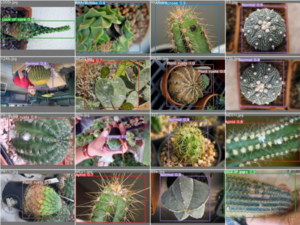
There is a growing interest in cactus cultivation because of numerous cacti uses from houseplants to food and medicinal applications. Various diseases impact the growth of cacti. To develop an automated model for the analysis of cactus disease and to be able to quickly treat and prevent damage to the cactus. The Faster R-CNN and YOLO algorithm technique were used to analyze cactus diseases automatically distributed into six groups: 1) anthracnose, 2) canker, 3) lack of care, 4) aphid, 5) rusts and 6) normal group. Based on the experimental results the YOLOv5 algorithm was found to be more effective at detecting and identifying cactus disease than the Faster R-CNN algorithm. Data training and testing with YOLOv5S model resulted in a precision of 89.7% and an accuracy (recall) of 98.5%, which is effective enough for further use in a number of applications in cactus cultivation. Overall the YOLOv5 algorithm had a test time per image of only 26 milliseconds. Therefore, the YOLOv5 algorithm was found to suitable for mobile applications and this model could be further developed into a program for analyzing cactus disease.
- Free and open source code: https://github.com/Kanlayanee-k/cactusdoctor
See also[edit | edit source]
- OS Computer Vision for Distributed Recycling and Additive Manufacturing
- Additional OS Computer Vision Applications













